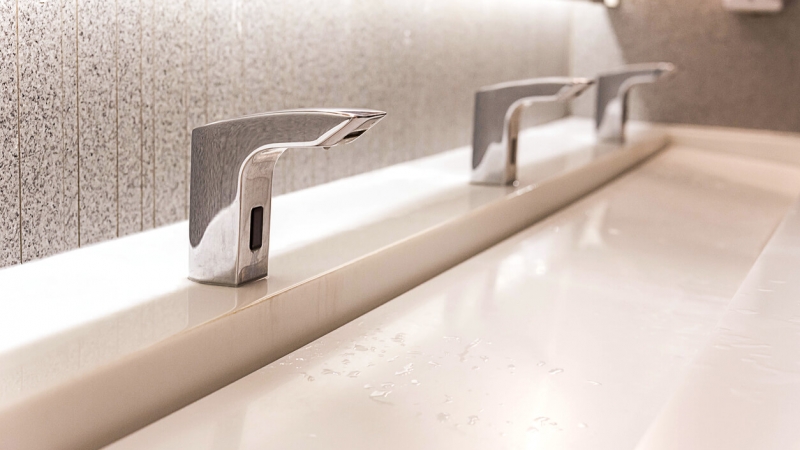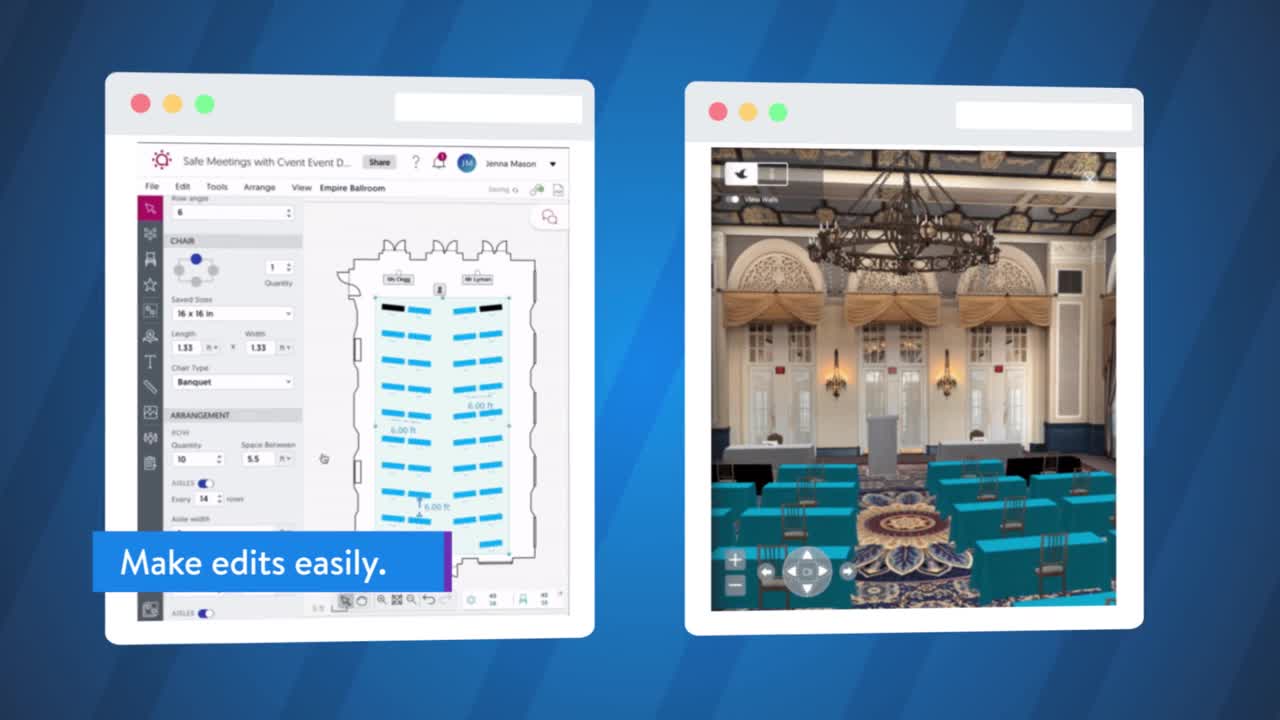Expert hoteliers are comparing the industry’s response to COVID-19 and the increased awareness of health and safety when traveling to that of post-9/11 airports. “Hygiene is the new security,” says Jean-Michel Gathy, the owner of luxury hotel design firm Denniston. And one of the best ways to maximize the well-being and peace of mind of your guests is to incorporate touchless hotel ideas into your business and property.
“People always have had high expectations of cleanliness from luxury hotels,” says Montage International founder Alan Fuerstman. “Now it’s just going to get a little higher. And there’s a ton we can learn from hospitals. Hand sanitizers located throughout our hotels, hand washing stations for staff, ultraviolet light and disinfecting wands for cleaning public spaces quickly, more antimicrobial surfaces in our lobbies and rooms. All of a sudden this is all on the table.”
This means we are in a moment the industry has never seen before. Not only have guests opened their minds to what the hotel experience can or should be like, they’re also counting on properties to come up with new ideas, both for now and well into the future.
Luckily, there are a lot of great examples from industry leaders to inspire upgrades and keep you ahead of the hotel digital transformation boom. Keep reading to discover 21 touchless hotel ideas ranging from the far-out, such as food delivery robots, to some previously underappreciated systems, like contactless room keys, that are now making a huge difference in the lives of hotel guests.
What is a touchless hotel?
A touchless hotel decreases or eliminates the need for guests to interact with germy, unsafe surfaces as much as possible through smart hotel technology that automates common tasks or allows guests to use their phones for key tasks such as check-in.
Transform your group and transient business today
Explore 21 touchless hotel ideas from across the industry:
1. Try virtual personal training sessions.
The American Club in Wisconsin has swapped in-person yoga classes on their gorgeous outdoor patio for sessions that people from all over the world can tune into on YouTube. Offer private fitness consultations, one-on-one workouts, and group experiences all through digital platforms.
2. Digitize do not disturb.
As Larry Mogelonsky of Hotel Mogel Consulting Limited says, “These are relatively simple additions, but the added benefit is that they can inevitably help with operational efficiency.” He also notes that it’s helpful for keeping cleaning teams safe too. Allow guests to control their DND signs through an app on their phone with your hotel’s branding to elevate the marketing of it.
3. Motorize blinds.
Support sanitary drape raising and lowering practices by offering a combination of app-based and voice controls for them. "My mobile device now is like my remote control for life," says former Starwood Hotels and Resorts’ CEO Frits van Paasschen. "There's no reason why that shouldn't be your portal to get to your room, ask for what you want, or anything else."
4. Offer virtual tours.
Show, don’t tell, guests about your latest technology upgrades with virtual tours of the lobby, public bathrooms, front desk, elevator, gym, restaurant, and rooms to instill confidence. Add clickable maps of the property to your hotel website so anyone who stays with you can get directions within the building or campus to limit unnecessary wandering and overexposure to germs.
5. Redo lobby layouts.
Try remodeled movement flows in lobbies and other shared public spaces using diagramming tools to fully visualize changes before you make them. In fact, a study published in Transportation Research Interdisciplinary Perspectives proved that unidirectional foot traffic is less effective than other potential layouts because the method increases time spent in the space, ultimately leading to increased exposure. Swap this popular layout for ones that help decrease a guests’ amount of time spent in the shared space for maximum safety.
6. Install smart thermostats.
Choose a smart thermostat that offers app-based control over Wi-Fi so guests can change the temperature without touching the dial. Or, use what’s known as the Zigbee protocol (aka wireless IoT networks) to avoid slowing down connections. Enjoy the added benefits such as energy cost savings, greener hotelwide practices, and predictive maintenance features.
7. Add digital check-in.
Offer mobile check-in for hotel rooms that allow guests to announce their arrival and even select their own room from a map of options. Pro tip: Link your check-in process with your rewards programs to streamline the process and encourage more people to actively engage with it.
8. Have motion sensor faucets.
Install them in guest rooms, public bathrooms, spas, gyms, and kitchens to completely eliminate one of the top 10 germiest spots in homes, with an alarming average of 127,000 bacteria per cm2.
9. Get voice-controlled elevator technology.
Although this isn't available yet, “product offerings in the works (at Otis and Thyssenkrupp) include calling the elevator via cellphone, antiviral stickers for elevator buttons, lobby concierge-run elevators, express service for each elevator ride, ultraviolet-light HVAC purification systems and even elevator buttons that riders can activate with their feet, voice or hand gestures.” In the meantime, place touchless antibacterial hand sanitizers directly next to buttons inside and outside of elevators.
10. Use digital room keys.
Offer keys a guest can access right from their phone so they can wave it in front of their door and easily unlock it without ever touching the handle.
11. Install UV-light wireless phone chargers.
Choose a tool that offers the highest disinfectant capacity with a peak-effect wavelength to destroy harmful bacteria on phone surfaces while juicing up batteries.
12. Employ robot bellhops.
Give guests the option to have their bags carried to their rooms or cars by an actual robot they won’t have to tip at the end. For example, New York's Yotel has fully equipped their lobby with them so guests can have their luggage transported or even stored for their convenience.
13. Feature phone-controlled lighting.
As part of their effort to go touchless, luxury hotels in California wine country have transitioned rooms over to app-controlled, voice-based, and motion-sensored systems. Choose one method that fits within your budget and consistently apply it in all suites.
14. Communicate through text.
Limit face-to-face interactions between front desk staff and guests by setting up a 24/7 texting portal for customer service. Allow guests to ask questions, request later checkouts, and answer location-based questions all without leaving their room.
15. Offer voice-controlled TV.
Use voice assistants made by companies such as Google and Amazon in rooms. Then, sync them with televisions so guests can search for movies, bring up their favorite streaming service, and adjust the volume without having to touch a remote in the process.
16. Feature robot wait staff.
Employ robots to deliver food to guests in what hotel design visionaries are calling pop-up dining experiences. “We’re thinking the whole dining experience could change,” said Tom Ito of Gensler, a global architecture firm. “You can create spaces around the hotel that aren’t necessarily in the restaurant, but become pop-up areas for private dining. It’s all about personalization and creating a unique experience.”
Learn all about the latest group business best practices
17. Try contactless payment.
Give guests the option to pay through the card they used to reserve the room or via NFC (near-field communication) payment options such as Apple Pay.
18. Have on-demand housekeeping.
Prevent having guests chase down housekeeping staff throughout the building by giving them a streamlined way to communicate. Ask them to either submit a request to the front desk through a texting-based system. Or, cut out extra communication with a dedicated platform and drop-down menus that offer frequently requested options such as sending over extra towels.
19. Promote digital spa bookings.
Swap forcing guests to talk to the spa welcome desk or concierge in person to make their appointments and make booking possible online. Then, use electronic signatures for consent forms and appointment changes. Finally, use push notifications or automated emails to confirm appointments, give 15-minute pre-service reminders, and reiterate safety protocol when participating in spa amenities.
20. Encourage outdoor space reservations.
Use an online booking system for shared outdoor areas such as beach lounge chairs, pool cabanas, and fire pits so guests don't have to book in person and public spaces don’t get overcrowded. Number seating areas and provide signage so the new process is clear.
21. Use digital-only check out.
Add app-based forms, thank-you messages, and digital room keys to your procedures if you want to make a digital-only check out process fluid. Email guests their invoice and provide instructions for how they can communicate with hotel staff should any issues arise.
Answers to frequently asked questions about touchless hotels:
Can you eliminate all touchpoints in a hotel?
Currently it is not possible to eliminate all touchpoints in a hotel, but you can eliminate most hotspots such as check-in and door handles.
How do you choose a touchless vendor?
Choose a touchless vendor based on their data security practices, how comprehensive their features are (it’s better to get one tool that does five things than five tools that all do one), and whether or not they view their clients as strategic partners rather than a one-off interaction.
Put these touchless hotel ideas to good use today!
Up next, keep your finger on the pulse of the industry by keeping up with regularly updated health and safety information from venues all over the globe so your hotel is always on the cutting edge of health-related innovations. Then, see even more ways you can go touchless with real-life examples from hotels adapting to COVID-19 and the evolving industry landscape.









